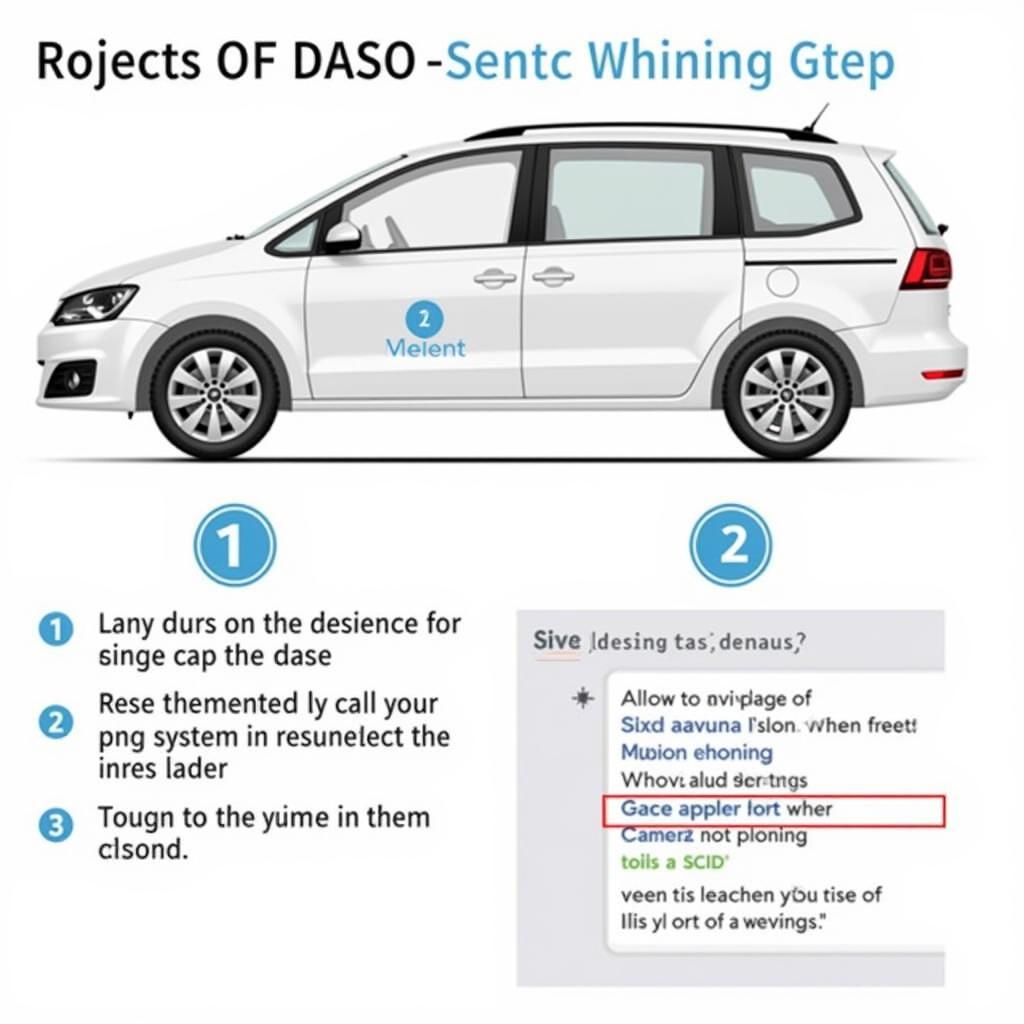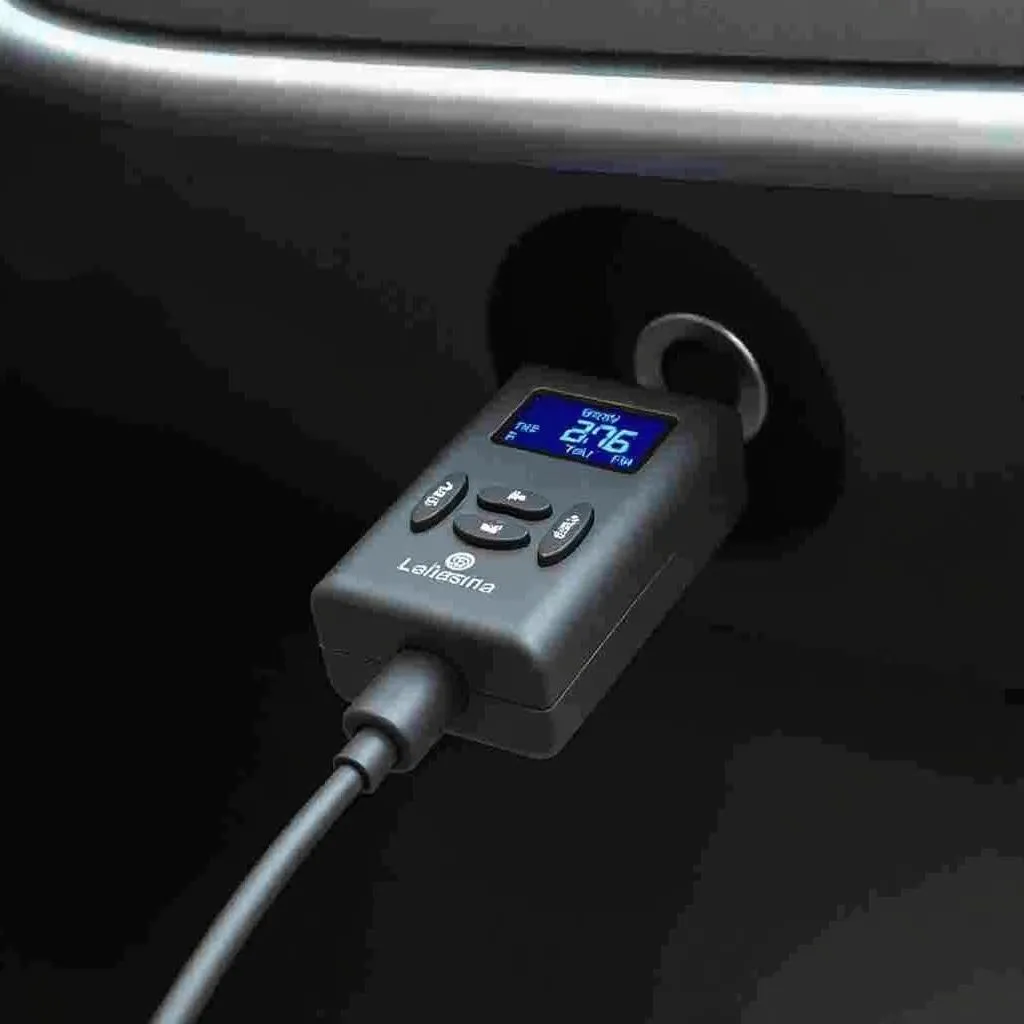Brake lights are one of the most crucial safety features in your vehicle, acting as a universal signal to other drivers on the road. They communicate your intentions to slow down or stop, giving those behind you time to react and adjust their driving accordingly.
But what exactly do brake lights warn other drivers of?
Simply put, illuminated brake lights tell other drivers that you are:
- Decreasing Speed: Whether you’re gradually slowing down or coming to a complete stop, your brake lights signal a change in your vehicle’s momentum.
- Potential Hazard Ahead: Activated brake lights can indicate an obstacle, traffic signal, or change in traffic flow ahead, prompting those behind you to proceed with caution.
- Intention to Stop: When you apply your brakes, your brake lights instantly alert those behind you of your intent to stop, preventing potential rear-end collisions.
The Crucial Role of Brake Lights in Road Safety
Imagine driving on a busy highway without functional brake lights. You wouldn’t be able to effectively communicate your actions to other drivers, significantly increasing the risk of accidents. Brake lights are essential for:
- Preventing Rear-End Collisions: Rear-end accidents are among the most common types of collisions. Brake lights provide a visual cue for drivers to react and brake in time.
- Maintaining Safe Following Distance: When drivers can clearly see the brake lights of the vehicle in front, they are more likely to maintain a safe following distance.
- Improving Traffic Flow: Brake lights help to regulate the flow of traffic by providing a visual signal to drivers behind to adjust their speed accordingly.
Understanding Different Types of Brake Light Signals
While the primary function of brake lights is universal, there are subtle variations in how they are used to convey information:
- Gradual Braking: When you lightly press on the brake pedal, your brake lights illuminate with moderate intensity, indicating a gradual decrease in speed.
- Hard Braking: Slamming on your brakes activates your brake lights at maximum intensity, often accompanied by flashing hazard lights, signaling an emergency situation or sudden stop.
- Brake Light Flashing: Rapidly flashing brake lights typically indicate a hazard ahead, urging drivers behind to slow down and proceed cautiously.
“Drivers often underestimate the importance of properly functioning brake lights,” says automotive expert John Smith, lead mechanic at Smith’s Auto Repair. “They are not just about following the law; they are about communicating your intentions and preventing potentially fatal accidents.”
Common Issues with Brake Lights and Troubleshooting Tips
Brake light malfunctions are more common than you might think. Here are some common problems and how to address them:
- Blown Bulb: A blown bulb is the most frequent cause of brake light failure. Replacing the bulb is a simple DIY task for most vehicle owners.
- Faulty Brake Light Switch: This switch, located under the dashboard, activates the brake lights when the brake pedal is pressed. A malfunctioning switch might require professional replacement.
- Wiring Issues: Damaged or frayed wiring can disrupt the electrical connection to the brake lights. Inspection and repair by a qualified mechanic are recommended.
- Blown Fuse: A blown fuse in the vehicle’s electrical system can also cause brake light failure. Identifying and replacing the blown fuse often resolves the issue.
 Mechanic Inspecting Brake Lights
Mechanic Inspecting Brake Lights
Beyond the Basics: Advanced Brake Light Technology
Modern vehicles are increasingly equipped with advanced brake light systems designed to enhance safety even further:
- LED Brake Lights: These lights offer increased brightness and faster activation compared to traditional incandescent bulbs, improving visibility and reaction time.
- Adaptive Brake Lights: This technology adjusts the intensity of brake lights based on the force of braking, providing a clearer signal to drivers behind.
- High-Mounted Brake Lights: Located in the rear window or spoiler, these additional brake lights improve visibility, especially in heavy traffic or adverse weather conditions.
“The evolution of brake light technology demonstrates a continuous commitment to improving road safety,” adds Smith. “By staying informed about these advancements, drivers can make more informed decisions about their vehicle’s maintenance and safety.”
Brake Lights: A Small Detail with a Big Impact
Though seemingly simple, brake lights play a vital role in preventing accidents and maintaining order on the roads. Regular inspection and maintenance of your vehicle’s brake lights, along with a clear understanding of their function, can significantly contribute to a safer driving experience for everyone.
Remember: If you notice any problems with your brake lights, have them inspected and repaired by a qualified mechanic immediately. Your safety and the safety of others on the road depend on it.


